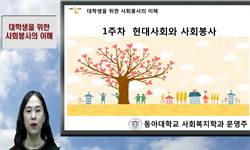In the foreseeable future, our nation is projected to become a ‘multicultural and multi-ethnic society’ according to OECD standards. This transformation indicates that the imminent necessity of accompanying ‘migrant-background’ seminarians, wh...
http://chineseinput.net/에서 pinyin(병음)방식으로 중국어를 변환할 수 있습니다.
변환된 중국어를 복사하여 사용하시면 됩니다.
- 中文 을 입력하시려면 zhongwen을 입력하시고 space를누르시면됩니다.
- 北京 을 입력하시려면 beijing을 입력하시고 space를 누르시면 됩니다.

다양성 안에서 통합을 지향하는 사제 양성 - 이주배경 청소년의 신학교 입학이 끼칠 긍정적 영향에 대한 소고 - = Priestly Formation Toward Integration in Diversity - Reflections on the Positive Impact of Seminary Enrollment for Immigrant Youth -
한글로보기부가정보
다국어 초록 (Multilingual Abstract)
In the foreseeable future, our nation is projected to become a ‘multicultural and multi-ethnic society’ according to OECD standards. This transformation indicates that the imminent necessity of accompanying ‘migrant-background’ seminarians, which has not existed until now, is also approaching. This study attempts to help reframe this impending phenomenon not as a source of anxiety, but as a novel opportunity for priestly formation. The Korean government is implementing ‘tailored support policies for youth’ in response to the increasing number of youth from migrant-backgrounds. The Catholic Church in Korea is carrying out various pastoral activities grounded in the ‘hospitality.’ The efficacy of these policies and pastoral care is contingent upon the realization of ‘respect for personal character.’ This principle of respecting personal character aligns precisely with the foundational objectives of seminary establishments. This alignment stems from the fact that a seminary functions as a community for educating seminarians to become co-workers of the episcopal order. The term ‘bishop’, originally derived from the Greek term episcopos, etymologically denotes ‘one who wants to serve others and help them become truly themselves.’ Consequently, both the Directory for the Formation of Catholic Priests in Korea and its seminal document(Ratio Fundamentalis), The Gift of the Priestly Vocation, emphasize the importance of personal accompaniment. This emphasis can be elucidated through the themes of ‘accompaniment fostering mutual growth’, ‘accompaniment that boasts about one’s weaknesses(2Cor 12:9)’, and ‘the fundamental relationship between service and vocation.’ To effectively implement these themes, it is imperative to consider ‘the recognition of a novel formator archetype that boasts about weaknesses’, ‘the expansion of volunteer activities to deepen and discern priestly vocation’, and ‘the publication of a comprehensive priestly formation manual grounded in the narratives of martyrs’. In conclusion, the acknowledgment of the novelty introduced by the admission of ‘migrant-background seminarians’ is not about inventing or discovering something new. Rather, it represents a paradigm shift towards the extant teachings of the Catholic Church, from which proceeds the practice of reevaluating and reinterpreting established practices of the seminaries in Korea.
동일학술지(권/호) 다른 논문
-
양성의 주체로서 양성자 공동체 각 구성원의 역할과 한계 - 『한국 천주교 사제 양성 지침』(개정) 제7장을 중심으로 -
- 한국가톨릭신학학회
- 정창주
- 2024
- KCI등재
-
- 한국가톨릭신학학회
- 김일두
- 2024
- KCI등재
-
- 한국가톨릭신학학회
- 기정만
- 2024
- KCI등재
-
신학교 입학과 양성과정에서 다루어지는 정신건강 - 『한국 천주교 사제 양성 지침』(개정)을 중심으로 -
- 한국가톨릭신학학회
- 유성모
- 2024
- KCI등재




 KCI
KCI 스콜라
스콜라






